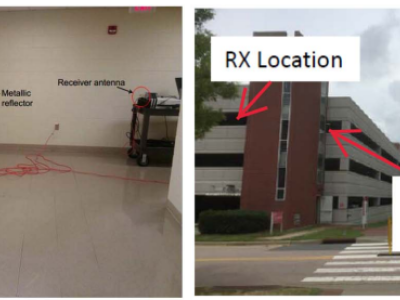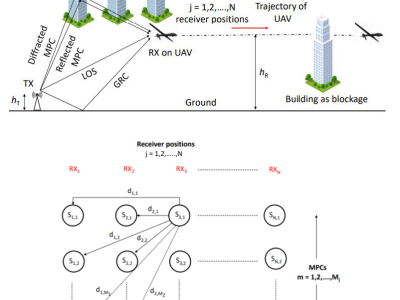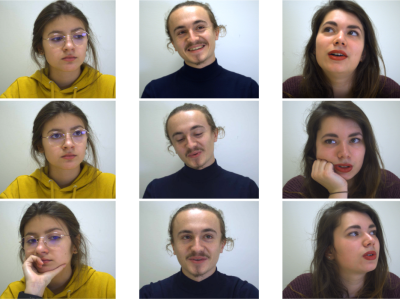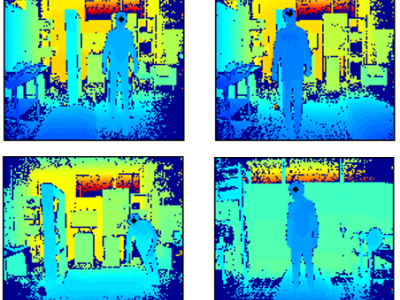Reflected Received Power Data from Different Shaped Metallic Reflectors using PXI Channel Sounder at 28 GHz

- Citation Author(s):
-
Ozgur OzdemirYavuz YapiciFatih ErdenIsmail Guvenc
- Submitted by:
- Wahab Ali Gulzar Khawaja
- Last updated:
- DOI:
- 10.21227/mbmw-ge30
- Data Format:
- Links:
 350 views
350 views
- Categories:
- Keywords:
Abstract
The measurement dataset consists of reflected received power from different shaped and sized metallic reflectors at 28 GHz in the indoor corridor and outdoor open area. PXI channel sounder from National Instruments was used for measurements. Horn antennas of gain 17 dBi were used at the transmitter and receiver. The measurements consisted of three flat square metallic reflectors of sizes 0.84 × 0.84 m^2 , 0.61 × 0.61 m^2 , and 0.3 × 0.3 m^2 , a sphere, and a cylinder. The effect of size and shape of the reflectors on the coverage was analyzed in the indoor corridor and outdoor open area. The measurement scenario was replicated using Wireless InSite ray-tracing software. The ray-tracing simulation data is also provided.
Instructions:
The data is divided into two parts. The measurement data and the ray-tracing simulation data. The measurement data contains the raw captured impulse responses provided in the Excel sheets. Each column of the Excel sheet is labeled according to the data type stored, e.g., max channel impulse response (CIR), path loss, and root mean square delay spread. The raw captured CIRs are time-stamped based on the receiver positions. In the indoor corridor, the measurements were taken at a grid of 50 × 5 receiver positions. The received power after time stamping and coherently averaging the contribution from different paths at the receiver grid 50 × 5 is provided in the .mat files. In the outdoor scenario, a single position of the receiver is considered. The reflectors are placed at an angle of 45◦ with the boresight of the transmitter antenna.
Horn antenna of gain 17 dBi was used for all the measurements. The operating frequency was 28 GHz and the bandwidth of the system was 2 GHz. The duration of the sounding signal was 1.33 µs, which is the maximum measurable excess delay, and a delay resolution of 0.65 ns. The analog to digital converter had a dynamic range of 60 dB and a path loss of up to 185 dB can be measured. The transmit power was set to 0 dBm. The transmitter and receiver were synchronized using identical Rubidium clocks. The Rubidium clock system provided a common 10 MHz clock and pulse per second (PPS) signal.
Ray-tracing simulations were also carried out of the measurement scenario using the Wireless InSite software. The simulation data is provided in the .txt files. The format of the data in the .txt files is as follows: Each receiver is labeled sequentially (i.e., 1,2, and so on), and each receiver can contain a different number of rays. The first column contains the ray number, the second column contains the phase, the third column contains the delay, and the received power (dBm) of the rays is provided in the fourth column.
The dimensions of other reflectors used and further details about measurement and ray-tracing simulation settings are provided in the following papers:
- W. Khawaja, O. Ozdemir, Y. Yapici, F. Erden and I. Guvenc, ”Coverage Enhancement for NLOS mmWave Links Using Passive Reflectors,” in IEEE Open Journal of the Communs. Society, vol. 1, pp. 263-281, 2020.
- W. Khawaja, O. Ozdemir, Y. Yapici, I. Guvenc and Y. Kakishima, ”Coverage Enhancement for mm Wave Communications using Passive Reflectors,” Proc. IEEE Global Symp. on Millimeter Waves (GSMM), May 2018, Boulder, CO, pp. 1-6.
- W. A. Gulzar Khawaja, O. Ozdemir, F. Erden, I. Guvenc, M. Ezuma and Y. Kakishima, ”Effect of Passive Reflectors for Enhancing Coverage of 28 GHz mmWave Systems in an Outdoor Setting,” Proc. IEEE Radio and Wireless Symp. (RWS), Jan. 2019, Orlando, FL, pp. 1-4.
##########
Acknowledgements:
This work was supported in part by NASA through the Federal Award under Grant NNX17AJ94A, and in part by DOCOMO Innovations Inc.










